A digital guide to the semi-precious gemstones that are available at Opals Down Under. Some of these (and more) can be found in our Scratch Patch areas*
*Gemstones marked with (i) will be available only in store for sale, not in the Scratch Patch fossicking areas.
Click on the names under each gem for a video and more information.
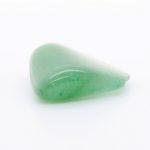
Aventurine 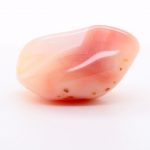
Apricot Agate 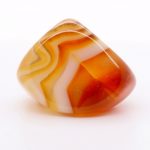
Agate (Banded) 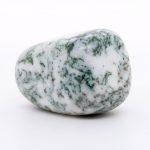
Tree Agate 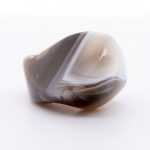
Agate 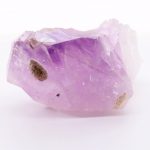
Amethyst Rough Point 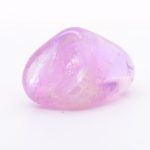
Amethyst (Banded) 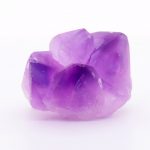
Amethyst Flower 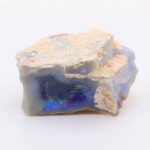
Black Opal (Rough) 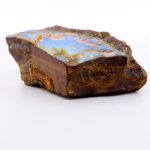
Boulder Opal (Rough) 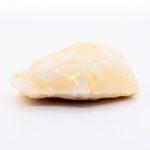
Light Opal (Rough) 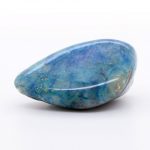
Chrysocolla 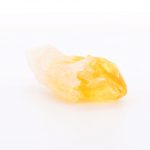
Citrine Point (Rough) 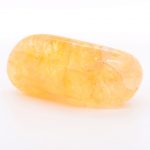
Citrine (tumbled) 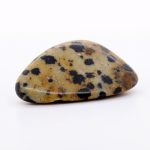
Dalmation Stone 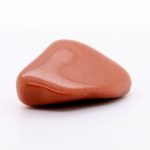
Goldstone 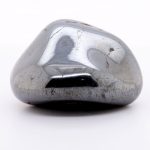
Hematite 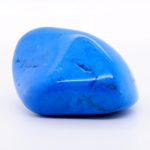
Blue Howlite 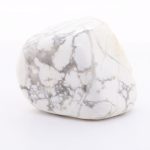
Howlite 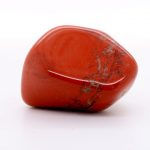
Red Jasper 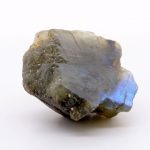
Labradorite 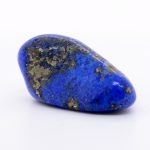
Lapis Lazuli 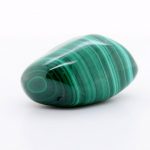
Malachite 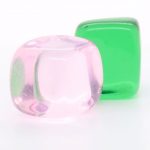
Obsidian (Coloured) 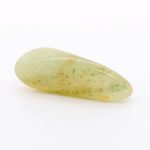
Prehnite 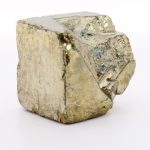
Pyrite Cube (Large Rough) 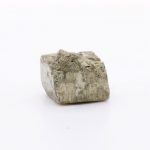
Pyrite Cube (Small Rough) 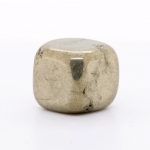
Pyrite Cube (Tumbled) 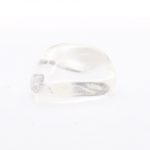
Clear Quartz 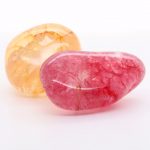
Coloured Quartz 
Rose Quartz 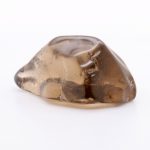
Smoky Quartz 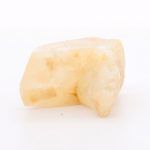
Selenite Butterfly 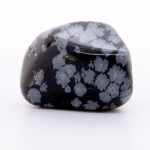
Snowflake Obsidian 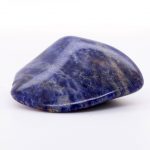
Sodalite 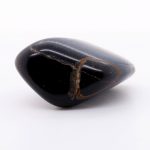
Blue Tiger’s Eye 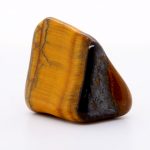
Tiger’s Eye 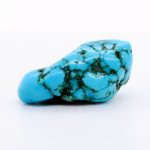
Turquentine 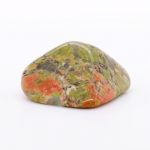
Unakite 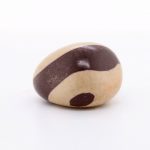
Zebrastone
AMETHYST FLOWER
AMETHYST FLOWER : A small cluster of rough Amethyst Points still attached to the matrix, making for a cute display (from Brazil) (i) BACK TO TOP
AMETHYST (BANDED)
AMETHYST (BANDED) : A tumbled Amethyst showing lovely bands of Purple hues (with some white). From Brazil. BACK TO TOP
AGATE (BANDED)
AGATE (BANDED): a variety of Chalcedony, a fibrous type of Quartz distinguished by orange, yellow and white bands. From South Africa. BACK TO TOP
CITRINE (TUMBLED)
CITRINE (TUMBLED) : a transparent, yellow variety of Quartz, ranging in colour from pale to golden yellow, honey or almost brown, and may contain rainbow or sparkle inclusions. The name comes from the French word citron, meaning lemon. From Brazil. BACK TO TOP
CITRINE (ROUGH POINTS)
CITRINE (ROUGH POINTS) : Rough crystal points of Citrine. Fun fact – Amethyst and Citrine are the same composition, just different heat has formed the different colours. You should research an incredible gem called Ametrine – a combination of Amethyst and Citrine (i) BACK TO TOP
HEMATITE
HEMATITE : is one of the most abundant minerals on Earth’s surface and in the shallow crust. It is an iron oxide with a chemical composition of Fe2O3. It is a common rock-forming mineral found in sedimentary, metamorphic, and igneous rocks at locations throughout the world. BACK TO TOP
HOWLITE
HOWLITE (WHITE) : Howlite is commonly used to make decorative objects such as small carvings or jewellery components. Because of its porous texture, Howlite can be easily dyed to imitate other minerals, especially turquoise because of the superficial similarity of the veining patterns. BACK TO TOP
LABRADORITE
LABRADORITE : a member of the Feldspar family and is treasured for its remarkable play of colour, known as labradorescence. The stone, usually grey-green, dark grey, black or greyish-white, is composed in aggregate layers that refract light as iridescent flashes of peacock blue, gold, pale green, or coppery red. (Found in Canada, Finland, Norway, Madagascar, China, Australia, Slovakia and the USA). BACK TO TOP
MALACHITE
MALACHITE : a green copper carbonate hydroxide mineral with a chemical composition of Cu2(CO3)(OH)2. It was one of the first ores used to produce copper metal. There is a myth that it could be dangerous to cut and polish Malachite due to dangerous amounts of arsenic found in the stone. This, however, is untrue, as it is the copper that can cause nausea when working with Malachite (if not wearing protective face wear). BACK TO TOP
OBSIDIAN (COLOURED)
OBSIDIAN (COLOURED) : Generally a black mineraloid, Obsidian is volcanically-formed glass. Lower-grade versions can be clear, and can be (in this case), coloured. (i) BACK TO TOP
PYRITE (TUMBLED)
PYRITE (TUMBLED) : Pyrite’s metallic lustre and pale brass-yellow hue give it a superficial resemblance to gold, hence the well-known nickname of fool’s gold. The colour has also led to the nicknames brass, brazzle, and Brazil, primarily used to refer to pyrite found in coal. BACK TO TOP
SMOKY QUARTZ
QUARTZ (SMOKY) : a brownish grey, translucent variety of quartz that ranges in clarity from almost complete transparency to an almost-opaque brownish-grEy or black crystal. Like other quartz gems, it is a silicon dioxide crystal. The smoky colour results from free silicon formed from the silicon dioxide by natural irradiation. BACK TO TOP
SODALITE
SODALITE : a rich royal blue tectosilicate mineral with the formula Na8(Al6Si6O24)Cl2, widely used as an ornamental gemstone. Although massive sodalite samples are opaque, crystals are usually transparent to translucent. Sodalite is a member of the sodalite group with hauyne, nosean, lazurite and tugtupite. Generally found in Greenland or Canada. BACK TO TOP
BLUE TIGER’S EYE
TIGER’S EYE (BLUE) : Sometimes referred to as Hawk’s Eye. A chatoyant gemstone that is usually a metamorphic rock with a golden to red-brown colour and a silky lustre. As members of the quartz group, tiger’s eye and the related blue-coloured mineral hawk’s eye gain their silky, lustrous appearance from the parallel intergrowth of quartz crystals and altered amphibole fibres that have mostly turned into limonite. BACK TO TOP
TURQUENTINE
TURQUENTINE : This is a form of Howlite that has been dyed to give the appearance of natural Turquoise. Quite often seen in cheaper ‘Turquoise’ jewellery. Given Howlite’s porous structure, and natural inclusions, makes it perfect for immersing in dye to imitate natural Turquoise. BACK TO TOP
PYRITE (ROUGH LARGE CUBE)
PYRITE (Rough Cube) : Naturally formed Pyrite cubes look AMAZING! We’ve taken to using some of these as our hidden golden nuggets in the Scratch Patch. (i) BACK TO TOP
LAPIS LAZULI
LAPIS LAZULI : lapis for short, is a deep-blue metamorphic rock used as a semi-precious stone that has been prized since antiquity for its intense colour. he most important mineral component of lapis lazuli is lazurite (25% to 40%), a blue feldspathoid silicate mineral Most lapis lazuli also contains calcite (white), sodalite (blue), and pyrite (metallic yellow). (Found in Afghanistan) BACK TO TOP
APRICOT AGATE
APRICOT AGATE : a variety of Chalcedony, a fibrous type of Quartz distinguished by soft apricot and white bands. BACK TO TOP
GOLDSTONE
GOLDSTONE : a type of glittering glass made in a low-oxygen reducing atmosphere. The finished product can take a smooth polish and be carved into beads, figurines, or other artifacts suitable for semi-precious stone, and in fact goldstone is often mistaken for or misrepresented as a natural material. BACK TO TOP
AMETHYST (ROUGH POINT)
AMETHYST (ROUGH POINT) : a rougher version of Amethyst. Interesting blend of the intense purples with white, with some natural matrix still attached. (From Brazil) (i) BACK TO TOP
ROSE QUARTZ (TUMBLED)
ROSE QUARTZ (tumbled) : the name used for pink specimens of the mineral quartz. It is abundant, common, and found in large quantities at numerous locations around the world. It is usually occurs as massive, anhedral occurrences in hydrothermal veins and pegmatites. The pink colour of rose quartz is attributed to microscopic inclusions of a pink variety of the mineral dumortierite. These inclusions are usually abundant enough to make the rose quartz translucent instead of transparent. BACK TO TOP
ZEBRASTONE
ZEBRASTONE : Zebrastone consists of a fine grained siliceous argilite (indurated siltstone or claystone) with rhythemic patterns of red bands or spots (formed from coloured ferric (iron) oxide) contrasting sharply with a lighter background. Only found in the East Kimberly region of Western Australia. (i) BACK TO TOP
SELENITE BUTTERFLY
SELENITE BUTTERFLY : A ‘twinned’ form of Selenite – a softer crystal formation with distinguishing features such as its crystal habits, pearly lustre, easy fusibility with loss of water, and solubility in hot dilute hydrochloric acid. The ‘twinning’ occurs when the two halves of a symmetrical crystal develop in the same plane. (i) BACK TO TOP
RED JASPER
RED JASPER : Jasper is an opaque rock of virtually any colour stemming from the mineral content of the original sediments or ash. Patterns arise during the consolidation process forming flow and depositional patterns in the original silica rich sediment or volcanic ash. Hydrothermal circulation is generally thought to be required in the formation of jasper. BACK TO TOP
CLEAR QUARTZ (TUMBLED)
CLEAR QUARTZ (TUMBLED) : is a hard, crystalline mineral composed of silicon and oxygen atoms. Quartz is the second most abundant mineral in Earth’s continental crust, behind feldspar. BACK TO TOP
AVENTURINE
AVENTURINE : a form of quartz, characterised by its translucency and the presence of platy mineral inclusions that give a shimmering or glistening effect termed aventurescence. Generally a moss green colour. Found mostly in India. BACK TO TOP
TREE AGATE
TREE AGATE : also known as dendritic agate. Dendrites are crystal inclusions that develop in foliage or tree branch-like patterns. In tree agate, these dendrites create a beautiful green dappling effect on a white base. Tree Agate was not just a decorative stone and was long used as talismans in Egypt, Greece and India. BACK TO TOP
DALMATION STONE
DALMATION STONE : also referred to as Dalmatian Jasper, is a white feldspar-Quartz mineral with black dotted inclusions. These dots were thought to have been Tourmaline, but recent studies have suggested that they are the mineral, Arfvedsonite. It is believed that Dalmatian Stone only crystallises in large mass form. Also referred to as Leopard stone. BACK TO TOP
UNAKITE
UNAKITE : sometimes known as unakite jasper, is a form of granite that includes pieces of pink orthoclase feldspar, green epidote, and quartz crystals. It has a distinctive, mottled green and pink appearance, and when it is polished, it has a beautiful multi-coloured appearance that makes for very striking jewellery. BACK TO TOP
CHRYSOCOLLA
CHRYSOCOLLA : a hydrated copper phyllosilicate mineral and mineraloid. Chrysocolla is a copper stone, ranging from light green to deep blue, and is often found in association with Malachite and Azurite. Some chrysocolla contains Cuprite. It is favoured as a stone of prosperity and business astuteness. BACK TO TOP
PYRITE CUBE (SMALL, ROUGH)
PYRITE CUBE (SMALL, ROUGH) : a smaller version, of the naturally formed Pyrite cubes. They look AMAZING! BACK TO TOP
HOWLITE (BLUE)
HOWLITE (BLUE) : Howlite is commonly used to make decorative objects such as small carvings or jewellery components. Because of its porous texture, Howlite can be easily dyed to imitate other minerals, especially turquoise because of the superficial similarity of the veining patterns. BACK TO TOP
SNOWFLAKE OBSIDIAN
SNOWFLAKE OBSIDIAN : a variation of Obsidian and is formed when the felsic lava from a volcano rapidly cools down with very minimum crystal growth. It’s basically a volcanic glass that formed as an igneous rock. Snowflake Obsidian is usually black in colour, with white patches called Phenocryst. BACK TO TOP
TIGER’S EYE
TIGER’S EYE: A chatoyant gemstone that is usually a metamorphic rock with a golden to red-brown colour and a silky lustre. As members of the quartz group, tiger’s eye and the related blue-coloured mineral hawk’s eye gain their silky, lustrous appearance from the parallel intergrowth of quartz crystals and altered amphibole fibres that have mostly turned into limonite. BACK TO TOP
COLOURED QUARTZ
COLOURED QUARTZ : Also known as Crackle Quartz. A pure Quartz crystal that has been super heated and then dyed to give it vibrant colours. (i) BACK TO TOP
PREHNITE
PREHNITE : a mostly translucent, and rarely transparent semi precious gem. Prehnite is brittle with an uneven fracture and a vitreous to pearly lustre, and its colour varies from light green to yellow, but also colourless, blue, pink or white. BACK TO TOP
AGATE
AGATE : a common rock formation, consisting of chalcedony and quartz as its primary components, consisting of a wide variety of colours. Agates are primarily formed within volcanic and metamorphic rocks. The ornamental use of agate dates back to Ancient Greece in assorted jewellery and in the seal stones of Greek warriors. BACK TO TOP
BOULDER OPAL (ROUGH)
BOULDER OPAL (ROUGH) : Australian opal native to the state of Queensland. Identifiable by its host rock of natural ironstone, the opal seam can be thin, and the host rock is left under the opal seam to help enhance the colour and provide durability. The second rarest opal type in Australia, accounting for 18 to 19% of Australia’s opal stocks. BACK TO TOP
BLACK OPAL (ROUGH)
BLACK OPAL (ROUGH) : Australian opal native to Lightning Ridge, New South Wales. The rarest form of Australian Opal, identifiable by its darker body tone. Gem-grade Black Opal can get anywhere up to AU$15,000 per carat. Black Opal accounts for only 1% of Australia’s Opal Stocks. Though typically from Lightning Ridge, some forms of darker opal can be found in Coober Pedy and Andamooka (both South Australia). BACK TO TOP
LIGHT OPAL (ROUGH)
LIGHT OPAL (ROUGH) : Australian Opal typically found in the South Australian opal fields of Coober Pedy, Andamooka, Mintabie, and Lambina. Identifiable by its lighter body tone, Light Opal splits into 2 different opal types – White Opal, and Crystal Opal. White Opal, otherwise known as Milky Opal has the white body tone, whereas Crystal Opal is translucent. The two opal types together account for 80% of Australia’s Opal stocks. Crystal Opal can be found in Lightning Ridge (NSW), White Cliffs (NSW) and the Queensland Opal fields as well. BACK TO TOP

